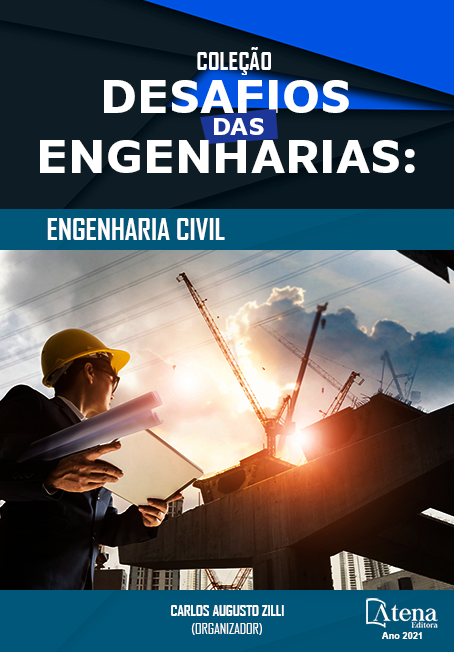
AVALIAÇÃO DA SUBSTITUIÇÃO PARCIAL DO CIMENTO PORTLAND POR CINZAS DE OLARIAS NO COMPORTAMENTO MECÂNICO DO CONCRETO ESTRUTURAL
Este artigo objetivou avaliar o efeito da substituição parcial do cimento Portland por cinzas de olaria em concretos estruturais. Os materiais utilizados foram cimento Portland CP V ARI, agregado miúdo, agregado graúdo, água e aditivo plastificante. Após os ensaios de caracterização foi realizado um estudo de dosagem que possibilitou um traço igual a 1:1,2:1,5:0,45 (Cimento:Areia:Brita:Água, em massa), além de um teor de 12,5 ml de aditivo por quilo de cimento. Na sequência moldou-se corpos de prova cilíndricos dos traços: convencional (T0), com substituição parcial de 5% do Cimento pela cinza (TC5) e com substituição parcial de 10% do Cimento pela cinza (TC10), realizando-se ensaios de absorção e resistência à compressão simples, após cura. A escolha do percentual de cinzas foi realizada seguindo os parâmetros da NBR 11578:1991 que limita o percentual de filler em 10%, já que as cinzas estudadas classificam-se como um material dessa classe. Analisando os resultados obtidos observou-se que houve um acréscimo da absorção dos traços com cinzas em relação ao traço convencional, provavelmente devido à cinza apresentar estrutura porosa. Em relação a resistência a compressão ocorreu decréscimo em relação ao traço convencional, com redução de 3% e 16% para os traços TC5 e TC10, respectivamente. Diante dos dados apresentados conclui-se que a substituição do cimento por cinzas de olarias é viável desde que se respeite o teor máximo igual a 5%, uma vez que esse teor não apresentou redução significativa na resistência a compressão do concreto.
AVALIAÇÃO DA SUBSTITUIÇÃO PARCIAL DO CIMENTO PORTLAND POR CINZAS DE OLARIAS NO COMPORTAMENTO MECÂNICO DO CONCRETO ESTRUTURAL
-
DOI: https://doi.org/10.22533/at.ed.02321140710
-
Palavras-chave: concreto; cinzas de olaria; filler
-
Keywords: concrete; pottery ashes; filler
-
Abstract:
This paper aimed to evaluate the effect of the partial replacement of Portland cement by potash ash in structural concretes. The materials used were Portland cement CP V ARI, small aggregate, large aggregate, water and plasticizing additive. After the characterization tests, a dosage study was carried out that allowed a trace equal to 1: 1,2: 1,5: 0,45 (Cement: Sand: Brita: Water, in mass), besides a content of 12, 5 ml of additive per kg of cement. Afterwards, it was molded cylindrical specimens of the traces: conventional (T0), with partial replacement of 5% of the cement by the ash (TC5) and with partial replacement of 10% of the cement by the ash (TC10). Absorption and simple compressive strength after curing. The percentage of ash was chosen according to the parameters of NBR 11578: 1991, which limits the percentage of filler to 10%, since the ashes studied are classified as a material of this class. Analyzing the obtained results it was observed that there was an increase in the absorption of the traces with ashes in relation to the conventional trait, probably due to the ash present a porous structure. In relation to the compressive strength, there was a decrease in relation to the conventional trait, with a reduction of 3% and 16% for the traces TC5 and TC10, respectively. In view of the data presented, it is concluded that the substitution of cement by potash ash is viable, provided that the maximum content is equal to 5%, since this content did not show a significant reduction in the compressive strength of the concrete.
-
Número de páginas: 15
- Jozilene de Souza
- Júlio César Damasceno
- José Edivandro de Sousa Júnior
- Larissa Barbosa de Lima


